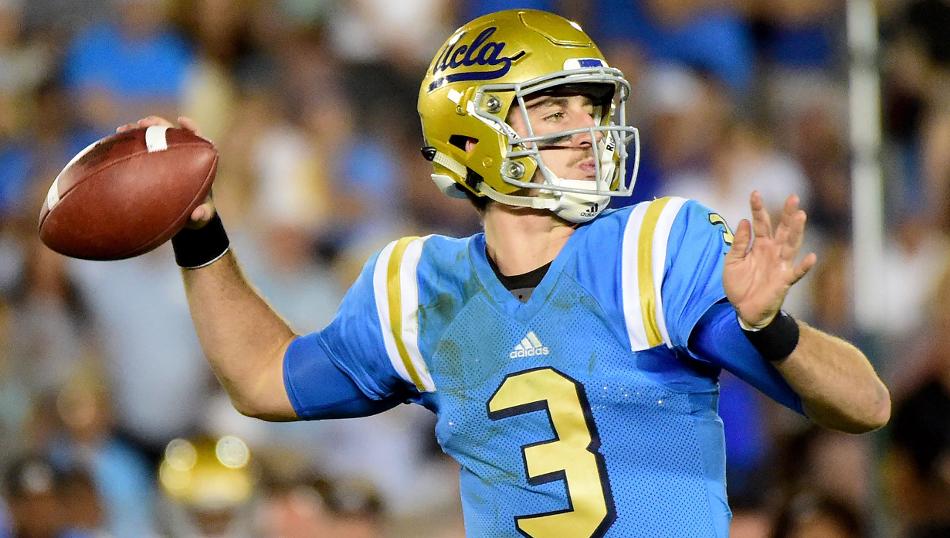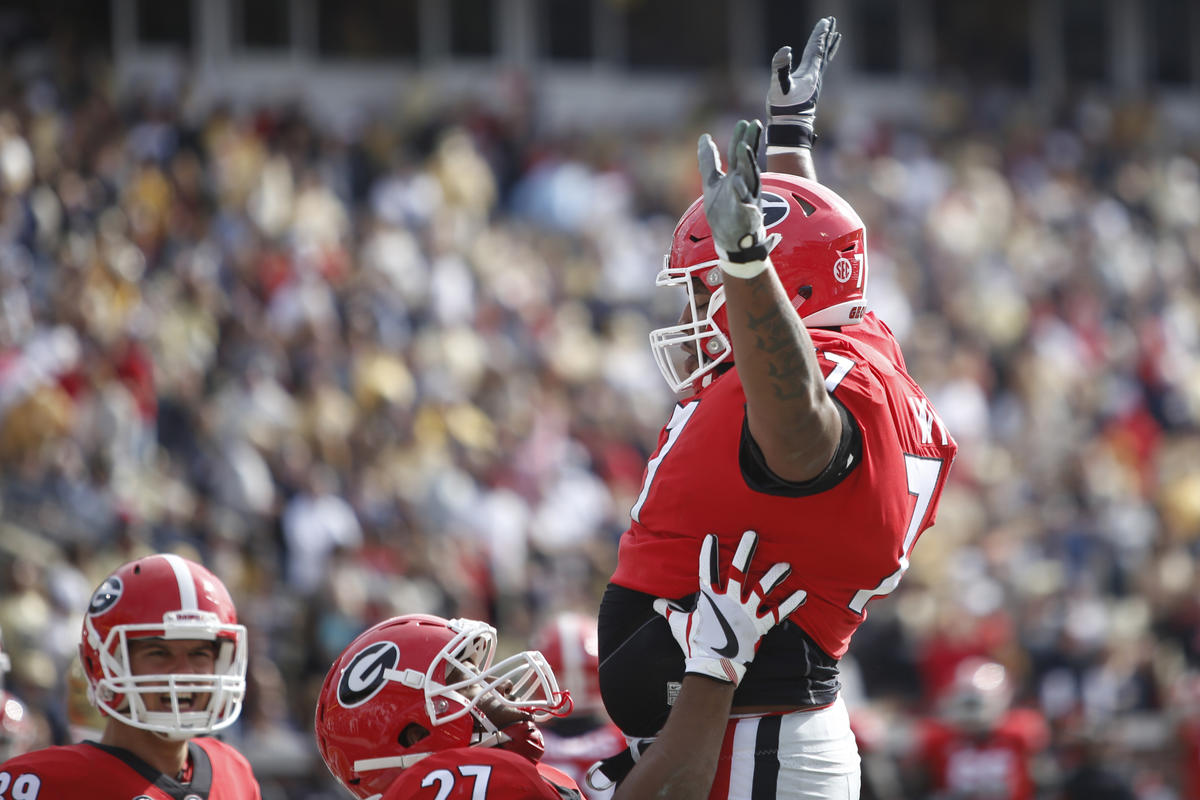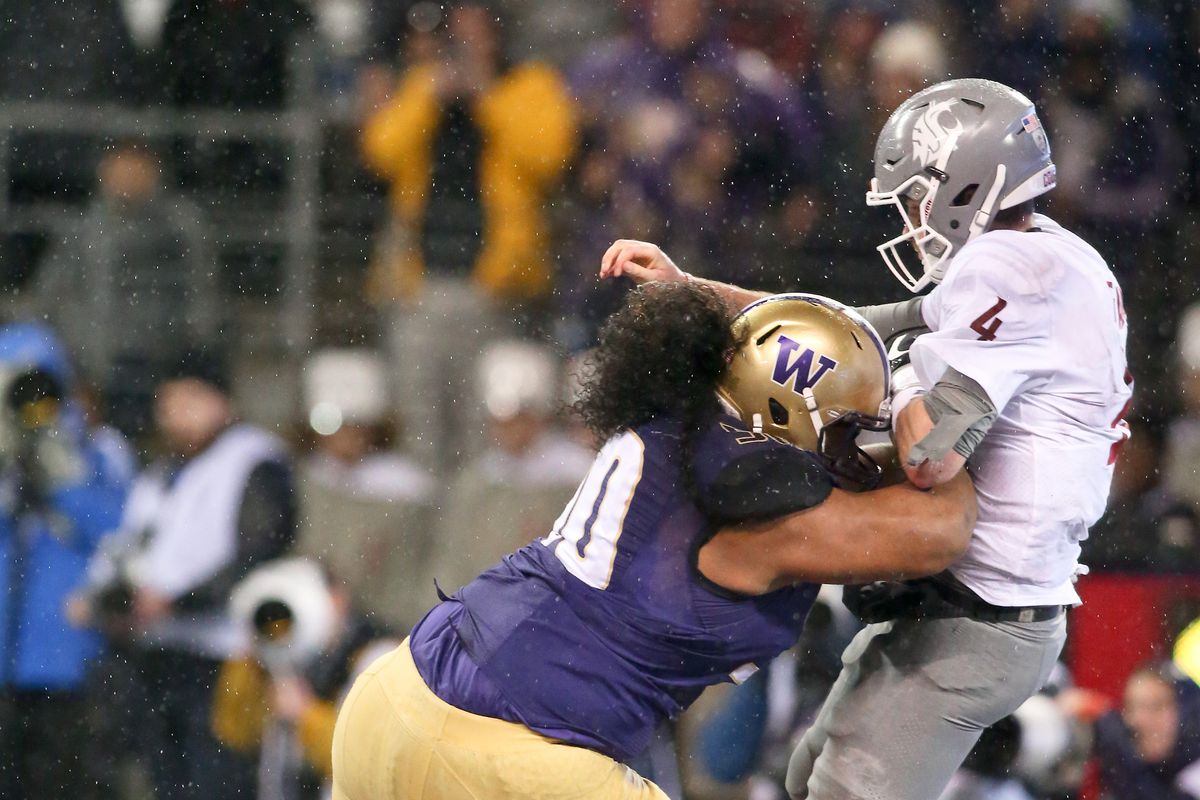It is always hard to compare players between positions, as the concept of positional value is likely valid (if somewhat unclear) and there is always the varying accuracy of evaluation between positions. There is a reason five quarterbacks will likely go in the first round of the draft but I’ve only given three first-round grades – and one of those players likely won’t even be drafted on the first two days – the most important position on the field can make or break your football club with his skill level and pro-readiness; you only essentially need one starting quarterback, so even if Josh Rosen was available at the 24th pick, it wouldn’t make sense for the Panthers to select him so that he could sit on the bench behind Cam Newton for the first segment of his career.
You’ll also find that some of my evaluations (like one of those quarterbacks we spoke about) won’t be found on other’s draft boards – I’ve written at length about my evaluation style and how I try my best to eliminate biases) are different than other draft boards, but an important facet of being an evaluator is trusting your gut and letting the chips fall where they may. As this evaluation of the 2015 draft class Big Boards shows, the year-to-year correlation for performance year-over-year was actually negative. If evaluating prospects was easy, almost 50% of first-round picks wouldn’t end up being busts.
However, despite all of this, it seemed prudent to at least attempt a final big board of my top 32 prospects; so here it is. I’ve also separated the few players who received a first-round grade – there will be 32 players selected in the first round next Thursday, but after watching tape on literally hundreds of prospects, there are only 12 first-round grades (and only 36 with first/second round grades; keep in mind, I am a notoriously hard grader), yet another reason why I think the prudent move for the Panthers would be to trade down unless one of the following dozen are available at the 24th pick.
First Round Grades

Josh Rosen. Photo Credit: Getty Images
Josh Rosen, QB UCLA
Rosen has faced a lot of criticism in recent weeks for his personality and durability, but very few people have actually managed to produce serious criticism on his play; some teams will pay more attention to the off-field factors than others, but if these rankings were going on tape alone, Rosen shines. It is hard to tie down QB value without either being able to work him out on a white board or having detailed knowledge of the read system when watching his tape, but there are very few concerns with what can be seen. His arm could be stronger and he could be more mobile – though he does move very well inside the pocket to avoid pressure – but he is one of the more well-rounded prospects from recent years. For a more complete evaluation, please see the Scout Camp profile.
Vita Vea, NT Washington
It is hard to judge just how valuable nose tackles are in the modern NFL, but Vea is one of the best in recent memory. From an athletic standpoint, he bears striking similarities to recent Panthers signing Dontari Poe, but on tape, he looks to be well ahead of where Poe was coming out of college. He uses his hands extremely well and has the kind of other-worldly power that will have defensive line coaches salivating. In a draft class that is very short of generational talent, Vea offers possibly the best chance at a franchise cornerstone piece outside of the quarterbacks. For a more complete evaluation, please see the Scout Camp profile.
Bradley Chubb, DE NC State
Chubb is certainly not the prospect that Myles Garrett was a year ago, but he is still a very well-rounded prospect who should offer a team immediate starting potential as a three-down defender. He is unlikely to be a dominant pass rusher without significant development, but he is good in all areas and in a draft short of top-end talent he is probably one of the safest picks in the draft, even if he is unlikely to ever become a superstar.
Minkah Fitzpatrick, FS Alabama
Fitzpatrick is another player whose value is in being very good at a number of things rather than having one elite trait; he will likely be tied quite heavily to how he is used at the next level. For teams that play a single high safety, the lack of extended experience in zone coverage will be of some concern, but for everybody else his intelligence, athleticism and versatility make him a useful chess piece on the back end. As with a lot of players towards the top of this draft class, it is hard to imagine him ever dominating the NFL, but as with Chubb, the floor is very high, especially for a defensive back.

Isaiah Wynn. Photo Credit: Associated Press
Isaiah Wynn, OG/T Georgia
Wynn will likely be forced to move to guard at the NFL level, and while he might not offer the domineering power of some other guard prospects, he shows an excellent combination of hand usage, balance and play height that should allow him to contribute immediately as a quality player in both the rushing and passing games. There is a ceiling on just how valuable interior offensive linemen can be unless they are elite in one category, but Wynn probably has a slightly higher chance of being elite than the likes of Chubb, though at a less valuable position. For a more complete evaluation, please see the Scout Camp profile.
Marcus Davenport, DE UTSA
As with many prospects, Davenport’s value is as much about who he might become, rather than who he is right now. He is an exceptional athlete who also shows good hand usage and the ability to bend around the edge. His pad level could do with some improvement, something that will likely be helped by the move from a 3-4 OLB to a 4-3 DE; he could add some pass rushing moves to take his game to the next level, but of all the DEs in this draft, Davenport offers the best chance at finding a dominant pass rusher, even if his floor isn’t as high as some. For a more complete evaluation please see the Scout Camp profile.
Saquon Barkley, HB Penn State
Barkley is a good running back prospect and probably the most valuable player at this position in the draft, but the idea that he is the perfect running back is somewhat ludicrous. He makes big plays in a way that very few can and his athleticism and ability in space are excellent, but his vision is questionable and he doesn’t run with the power that his size suggests. If he can show a willingness to take the yards that are blocked for him rather than trying to break every run outside then he should be a feature NFL back, and his value as a receiver is up there with all but Christian McCaffrey, but he is not the second coming of Walter Payton as some have suggested.
Kurt Benkert, QB Virginia
OK. Stay with me. This is where this draft board will be different from most of the others available, but I truly believe Benkert will be the steal of the draft. It’s hard to tie down just how good his decision-making is from tape, as is the case with every QB prospect, and this isn’t helped by Virginia’s offensive scheme or playing in the hyper-competitive ACC. But as a pure thrower of the ball, Benkert is probably the best in the class. Yes, better than Josh Allen. His arm is very large, but unlike Allen, he combined this with a higher degree of accuracy and touch; his first half against Miami is probably the best half of quarterback play I have ever seen in college football, and while his play throughout the season was more inconsistent, his ceiling is about as good as anybody out there, and he showed enough to encourage teams about his floor as well. I’m not saying he’s the next great QB, but his arm is elite and people seem willing to draft somebody in the first based on that, and he doesn’t have some of the red flags Allen does. Allen and Benkert only had one common opponent last season: Boise State. Allen went 12-27 for 131 yards, 1TD and two INTs. Benkert went 19-29 for 273 yards and three TDs with no INTs. Given that both are being drafted based largely off ceiling, Benkert at least appears to offer a much higher floor. While Allen & Benkert share similar completion percentages, this is apparently a huge red flag for Benkert and something to be ignored for Allen; call this grade an Allen replacement. For a more complete evaluation of Benkert, please see the Scout Camp profile.
Mark Andrews, TE Oklahoma
Andrews might not be the elite athlete that some former first round tight ends have been, but his route running is up there with some of the best receivers in the class; he understands how routes get him open and uses his body well at the crucial route points in order to generate separation. He does have enough athleticism to be a matchup problem for most linebackers and can even add yards after the catch; even if his blocking is somewhat underdeveloped, as are almost all tight ends coming out of the modern college game, Andrews should be able to contribute from day one. For a more complete evaluation, please see the Scout Camp profile.
Sam Darnold, QB USC
Darnold has flaws, his arm isn’t the strongest and his turnover numbers are troubling, but he is still one of the better quarterback prospects from recent years. As a pure thrower, he shows a high level of accuracy and touch, and while possibly overvalued in some circles, his ability to work when the play breaks down is valuable at the NFL level. He would likely be best suited to a situation where he can sit for a short period to make sure that his turnovers are due to a lack of scheme understanding, and some time in a weight room could certainly help, but quarterbacks of his caliber are rare enough to merit a first-round pick.
Connor Williams, OT Texas
Williams is another player who might not flash the top-tier potential of some historic tackle prospects, but shows enough agility to mirror around the edge while demonstrating a high level of technique. He doesn’t have the power to be a mauler in the run game and so will likely be best suited to a zone blocking scheme where he can use his hand usage and body control to best effect; there is a chance that he moves to guard at the next level due to his lack of elite athletic traits; his pad level is certainly good enough to make this transition feasible, but he’ll likely be at least given a shot on the outside. The ceiling might not be huge, but the floor is as very high.
Josh Jackson, CB Iowa
Hesitations about first round cornerbacks aside, Jackson looks to be the best cover man in this draft class. He lacks experience and his athleticism isn’t elite, but he shows good movement skills and excellent ball skills; at Iowa he was used mostly in man coverage but his most natural fit at the next level could well be in zone coverage where his ball skills can be put to good use. There is always a risk with drafting corners, as the transition to the NFL is a big one, but Jackson probably stands as good a shot as anybody in this draft class.



